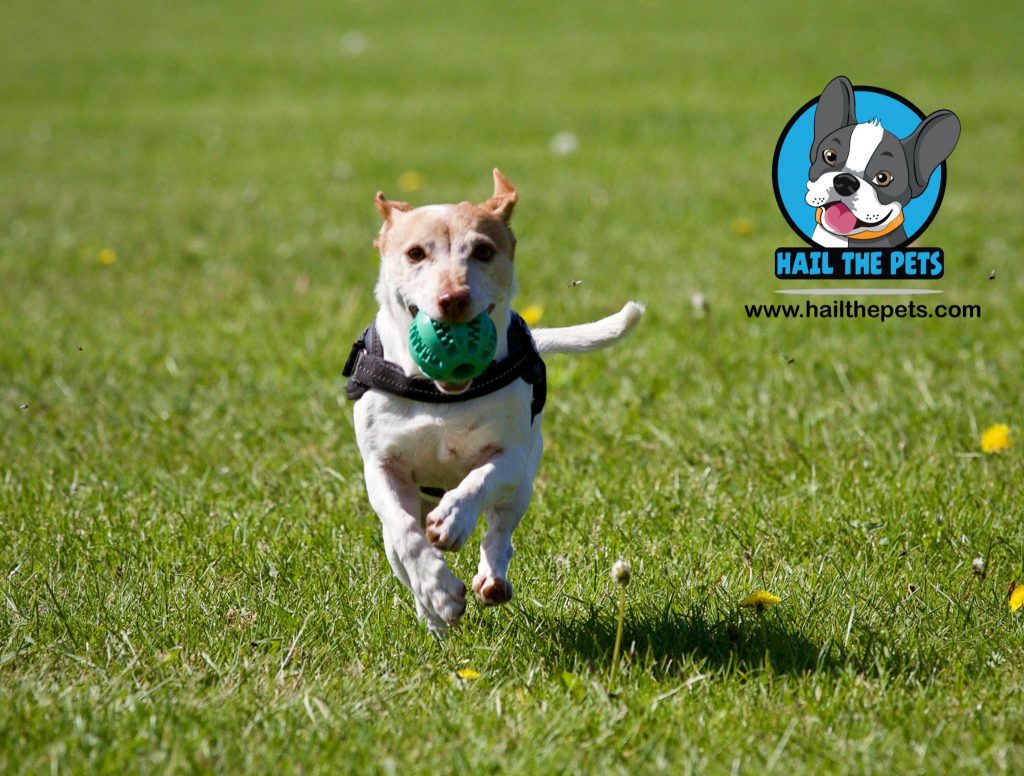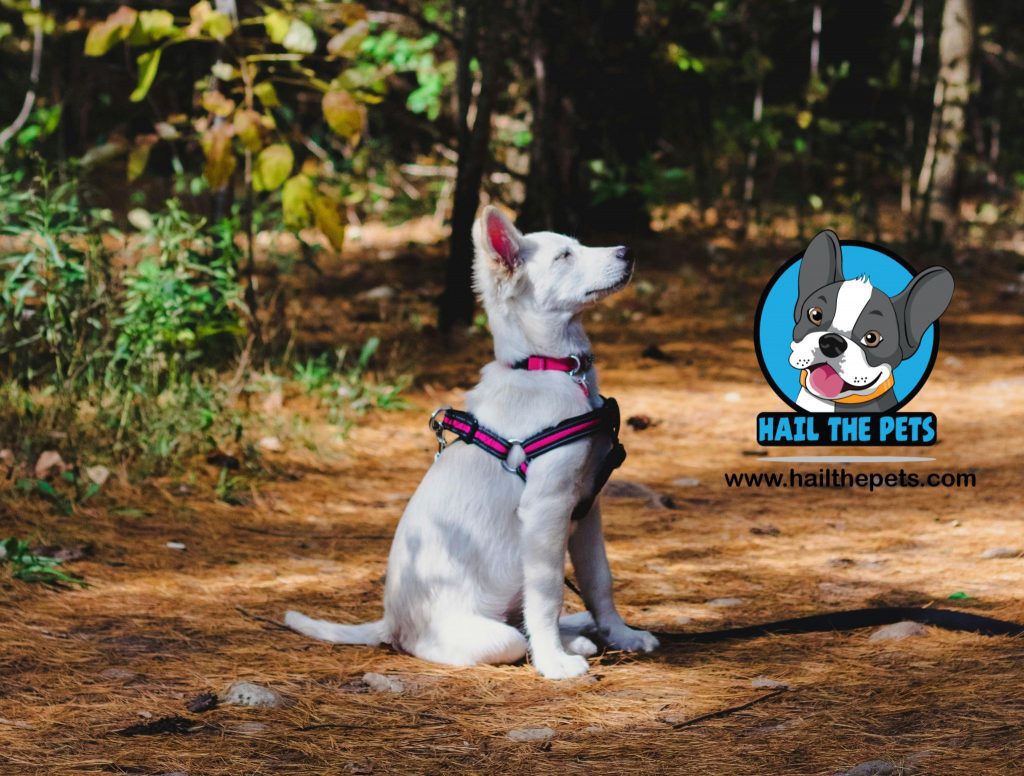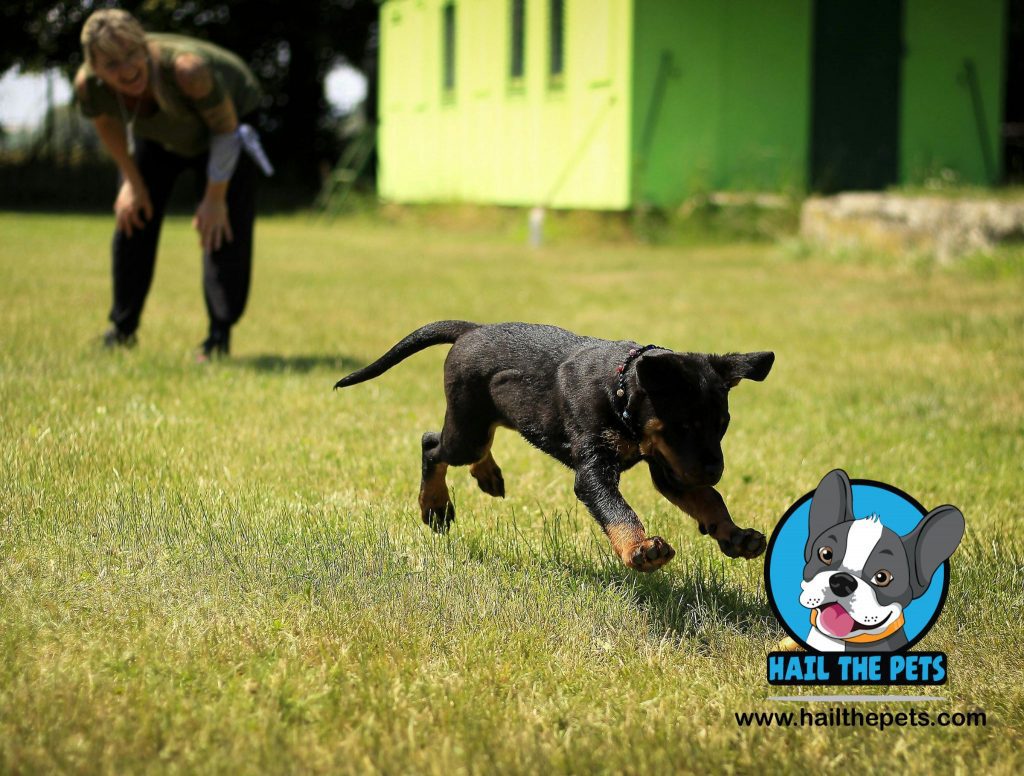Dogs’ body language, as non-verbal creatures, are amazing friends; nevertheless, people have to know their signals if they have a dog at home. Understanding a dog’s body language can take some time because our pets depend entirely on body language to convey their feelings, skills crucial for the generation of appropriate architecture between humans and canines.
Dogs possess a special form of body language that can be used to communicate with people and other dogs. Regardless of their personality, they use the same body structures, such as the tail, ears, and eyes, to both receive and convey information about how they feel.
This article explores the frequent signs of dog communication, offering an understanding of these cues to enhance mutual understanding and strengthen the bond between dogs and their parents. It also emphasizes the importance of seeking help from specialists when necessary, recognizing the complexity of dog communication and its underlying meaning.

Dog’s Tail Position and its Meaning
Tail tells a lot about our dog’s body language. What most people refer to as the “tail wag” actually holds a lot more. The movement and position of the tail are capable of reflecting their emotional state. Let us break down the basic basics of tail signaling.
Dog’s Tail Wagging
A wagging tail, which is normally an indicator of happiness and excitement in a dog, can change in meaning depending on the movement style of the tail. The wide sweeping wag mostly represents joy and pleasure.
Check out: Bernese Mountain Dogs: A 101 Guide To Their Breeds, Unique Temperaments, And Personality Traits
For example, if a dog is high and fast with its wag, then it could be excited or aggressive depending on the situation. A slow wag, mainly with the tail held low, usually indicates low self-confidence, and the dog may need some reassurance.
Different Tail Positions
Different tail positions tell us a lot about a dog’s body language. If the tail is held high and the back arched, it may mean that the dog wants to appear dominant. If a dog stands with his tail upright and stiff, he may be standing his ground, indicating domination or aggression. Conversely, a tail tucked between the legs usually means the dog is scared or submissive.
Examples of Tail Signaling
The tail signals of a dog require interpretation in the context of the whole. A wagging tail can signify a glad greeting when a dog first sees a person to whom it is familiar, but when that same dog sees someone it doesn’t know, that wag could be accompanied by stiffness and alertness in the body. A high, loose wag can mean “I’m happy to see you,” while a high, stiff wag might mean “Do not come closer.”
Some Other Cues
Other signals, such as the positioning of their ears, equally tell of a dog’s mood. Reading those signs is important in understanding and communicating with your dog at a much better level. By paying attention to those small gestures, you will be able to establish a deeper level of connection with your furry friend.
Know more about: Creating a viable dog schedule for your canine: A guide for busy pet owners
Dog’s Body Language to Decode Moods
To interpret a dog’s behavior, we also have to look for their ears. Upright and forward-positioned ears normally point to interest or attentiveness. For example, ears pointed upward when sitting on a neighbor’s fence are an expression of curious observation.
Floppy Ears
Floppy-eared breeds should be respected since some of them are genetic Southerners and therefore their ears conk that way. More little head and ear movements indicate inner feelings instead of posing rigidly.
In these breeds, ear position means much more than simple up or down or to the side, the slightest angle provides the key. Even an innocent jerk of the neck or the position of their ears flattened close to the head can be indicative of their state of mind and disposition.
Different Ear Positions
It is important to explore the various positions that ears can be in and what they mean. Positioned along the head, flatter than the head indicates fear, anxiety, or submission.
Ear-lowering is a submission signal whereby a dog submits to other dogs, thus conveying a message to others that they do not pose any threat. When one ear is forward and the other backward and drooping, it is a sign that the dog has perceived some uncertainty in its environment.
Check out: Top 10 Must-Have Pet Supplies for Every Pet Owner
Even for ears, people may differ in terms of the signals they react to. Similar to people, some dogs easily convey interior conditions through flamboyant signals while others do it in rather discrete manners. In either case, careful attention to such a choice promotes the essential bond of affection between dogs and considerate individuals.

Understanding Dog’s Facial Expressions
As we know facial expressions show a lot about inner feelings and are an important part of a dog’s body language. It’s the same when it comes to dogs. To know the feelings of a dog, there are many positions and attitudes that the shades of the face of the animal indicate in its behavior.
Dog’s Relaxed Face
Relaxed muscles may be expressed in gentle-looking, partially opened eyes and ears pointing to the sides as well. Such cues indicate that there is no tension being exhibited and suggest that the dog feels calm. The body language of a dog is also important to consider as well; especially when the dog has relaxed eyes and its mouth is loose.
Face in Stressed Conditions
As for tension, it emerges when the tone is different and the dog’s body language changes. Facial expressions might also change and become defensive: eyes could be downcast, narrow, or big, exposing whale eye whites if any. Lip licking, yawning, sniffing ranging without smelling signals that tell that there is a problem.
They frown and everything around their mouth is pulled tight usually when there are no other obvious causes. They are easily overlooked, and yet they hold information about the state of emotions of the dog which it cannot easily convey through other ways.
Read more about: Dog Breeds for Families: Finding the Perfect Canine Companion for Your Household
Posture Cues and Feeling Revealed
We, humans, can know a lot by reading the body language of someone. Likewise, the Dog’s appearance and how the body is postured gives a lot of crucial information regarding inner feelings.
Relaxed Body Posture
Lack of tension and slight drooping with an even distribution of the body weight on straightened limbs demonstrates satisfaction. Laughter could even approach the extreme of violent hyperactivity with real play-acting. A relaxed dog will have no rigidity anywhere on it and its movements will be smooth and free from stiffness.
Tense Body Posture
Rigidity arises from alarm. Hair bristles; arms tense up; pressure sinks towards the readiness to fight. Curled ears and the tail low between the legs intensified clutched tension. Possibly the dog has his muscles contracted and stiff and is relaxed only when his suspicions are directed towards an object or person. This position is also read as readiness in case a threat or any challenge is posed.
Additional Communication Cues
To understand fully our dog’s body language, about how they are feeling, we have to look for other non-verbal signs. Apart from the figuration indicators, dogs have subliminal psychophysiological states that translate into behaviors that sensitive people are able to interpret.
Eye Contact
Dogs look away when they are threatened; they glare to scan their interests. Eye contact with a dog may sometimes be a considerable issue or even an act of aggression but in other situations; it may show curiosity or even try to convey something.
Movement and Gait
The active body moves with enthusiasm while the nervous one paces. Observing a dog’s pattern of movement can help one understand the former’s current state of mind. If a dog is walking purposefully and briskly, it means that this dog feels safe while a dog that walks slowly or hesitates a lot, may be unsafe.
Calming Signals
The dogs avoid aggravation by signalizing attempts such as lip-licks when distressed. These suggest internal issues that need to be resolved before something happens. Rubbing of the eyes, yawning, licking lips and even turning away can mean a dog is just trying to relax or he is signaling that he is not dangerous.

Interpreting Mixed Signals
Sometimes we get mixed signals from our dog’s body language. These signals are natural and show the complexity of their emotions and reactions to different environments or situations. It is with some hesitation that the wagging of the tail is accompanied by a growl; thus, the full context deserves consideration.
Looking at Overall Signals
To understand their emotions, look for the overall signals such as, regarding ears, are they forward or back? What is the matter; is the body tense or relaxed? Reviewing all the aspects of presentation, including the position of one’s body, the direction of the eyes, the position of the tail, and so on concurrently helps in understanding your dog; ‘s condition.
Awareness of all the features of a dog’s behavior prevents misunderstandings and helps the development of a positive interaction.
Taking into Account Previous Experiences
Background information helps us more about a dog’s temperament. Random-bred dogs from shelters, which were formerly abused, approach the situations differently from domestic-bred pets. Situational anxieties are also a big factor; dogs that have had a terrible past will always show signs of fear and confusion.
Handling Mixed Signals of your Dog
As we discussed above, the mixed signals in dogs show their confusion or conflicting emotions. When a dog shows such behavior, you need to handle it very carefully so your dog doesn’t feel scared or show aggressive behavior. Provide the dog with space and time to perceive the environment. Forcing the interaction may be a source of stress and unpredictable reactions.
Allow the dog to come to you when ready. Watch for early signs of distress, such as changes in body weight, ear position, or facial tension. Catching these early can prevent bigger problems.
Respond calmly to mixed signals. Such sudden movements or too loud noises must be avoided, using a soft, soothing voice to make your dog secure.
Have a look at: Healthy Homemade Dog Treats? Recipes That Your Furry Friend Will Love
Tips for Improved Communication
We know you want to communicate with your pets, you want to share their emotions and get to know how they feel about their situations. The idea of communicating with your pet needs a really strong connection. These are practical learning strategies that can improve communication, and move your relationship to another level.
Positive Reinforcement
Additionally, one must punish the undesired behavior and at the same time encourage the right behavior like sitting calmly or playing gently with treats, praise, or affection. This classical conditioning approach enables your dog to repeat the behaviors without the belief that they will be punished. Positive reinforcement builds confidence in the dogs and trains them to the things they are allowed or not without causing any stress in them.
Consistency
Assign the same single term or a sign for each motion. Dogs understand that repetition is the foundation for creating a clear set of expectations for both, which is stable. To some extent, the continuous interaction impacts the dog’s ability to understand the orders from the owner and prevents the frustration that the dog or the owner has to go through.
Read more on: Dog communication basics
Understanding Personality
Introverted (shy/quiet ones) dogs enjoy their owner’s company in solitude. They like to be in relaxed situations and are not out-going. While extroverted dogs love to play around and go on walks with their owners. They love to play outdoor games and other fun activities. So if you want your dog to enjoy your company, you need to figure out their personality type. This will help you and your dog too in spending quality time with each other
Professional Assistance
In case concerning behaviors appear, it is recommended to consult an animal specialist. So that you can timely diagnose if there is any problem with your dog or if there’s anything that’s bothering him.
The ability to maintain the level of respect and use positive methods along with understanding the personality of a dog suits the needs of both the dog and its caretaker.
When issues arise, focusing on an individual’s well-being instead of how they are viewed asks for the individual to care for reasonableness that comes from a professional. This dynamic, utilitarian approach feeds the relationship foundation.
Read more about: Creating a viable dog schedule for your canine: A guide for busy pet owners

Conclusion
The ability to observe and understand the signals of our pets also contributes to deeper communication and their happiness. Through learning the ability to detect clues, grasping situational contexts, and knowing how to respond, dog owners can not only satisfy their beloved pet companions’ needful demands but also successfully establish trustful long-term relationships with them.
This guide explained basic tail wagging, ear postures, facial expressions, and many more to provide you with the “speaking dogs. ” The basics combined with proper advice on rewarding-only training help in enhancing security and mastering the communication between people and dogs.
Essential signals are present, but not all dogs similarly use them and this forms a basic difference. You need to understand how different every dog is, and then treat them accordingly. In general, communication helps build a strong bond between humans and other creatures, which helps both to enjoy their company and fulfill their emotional and physical needs.
